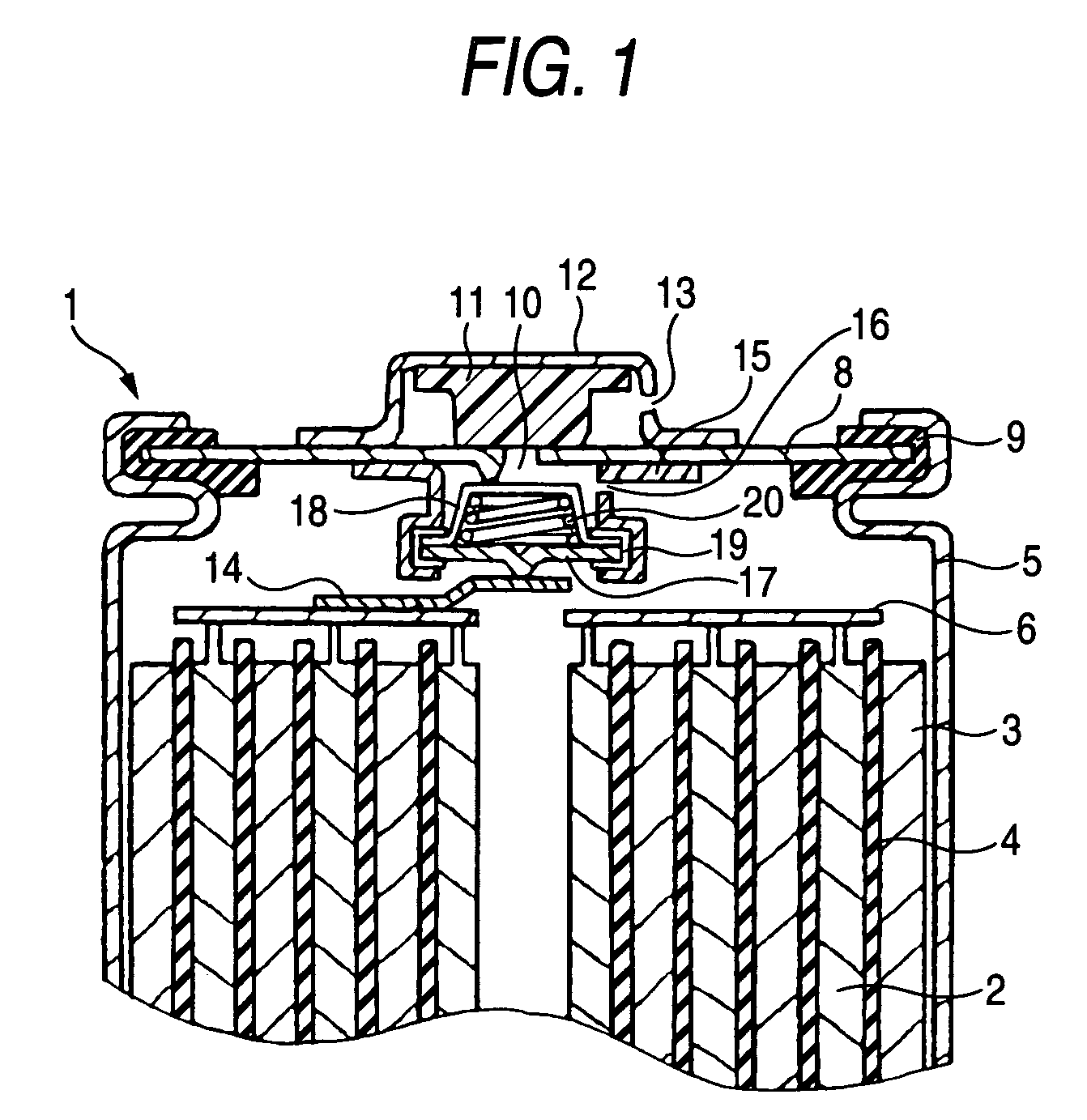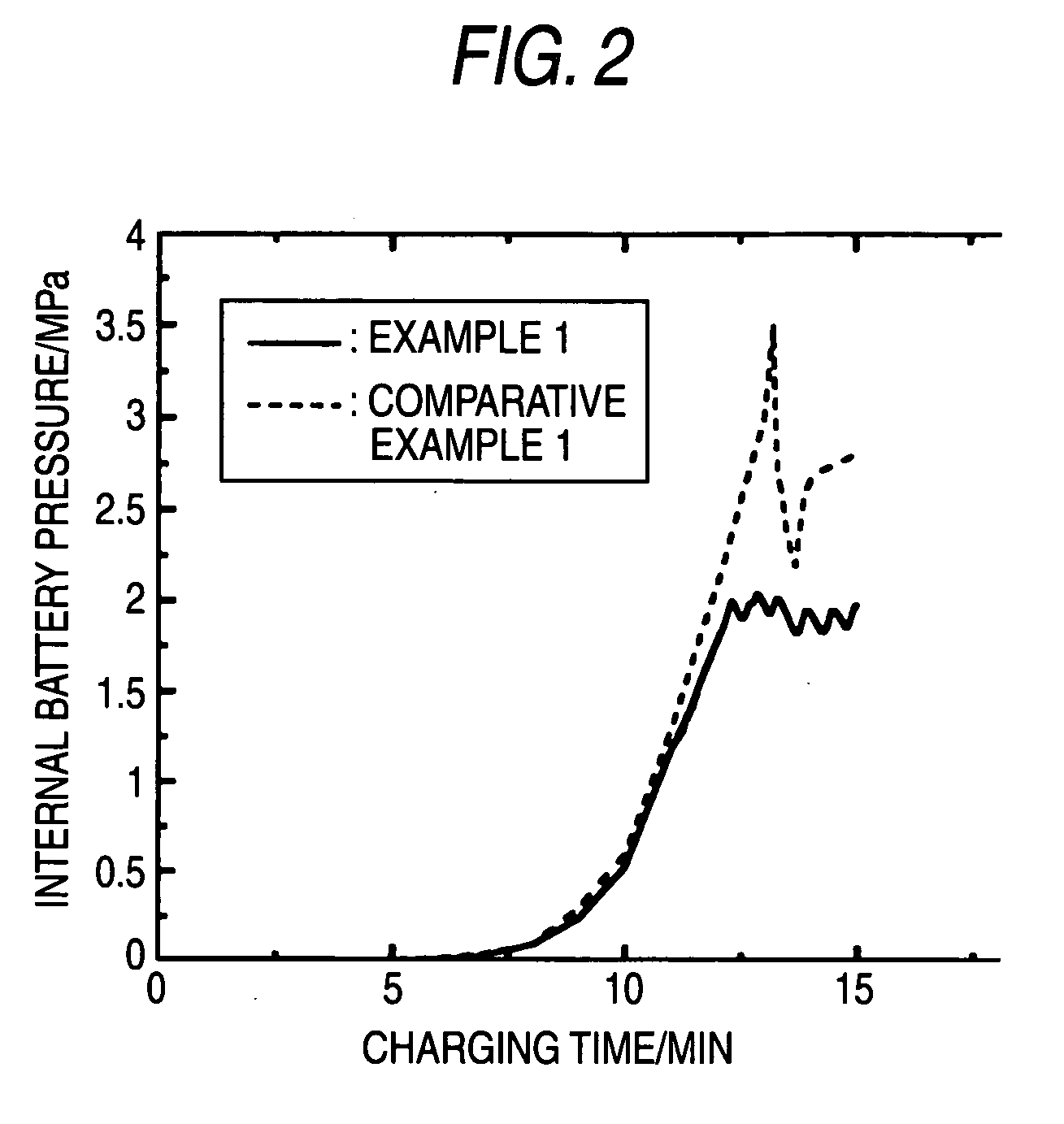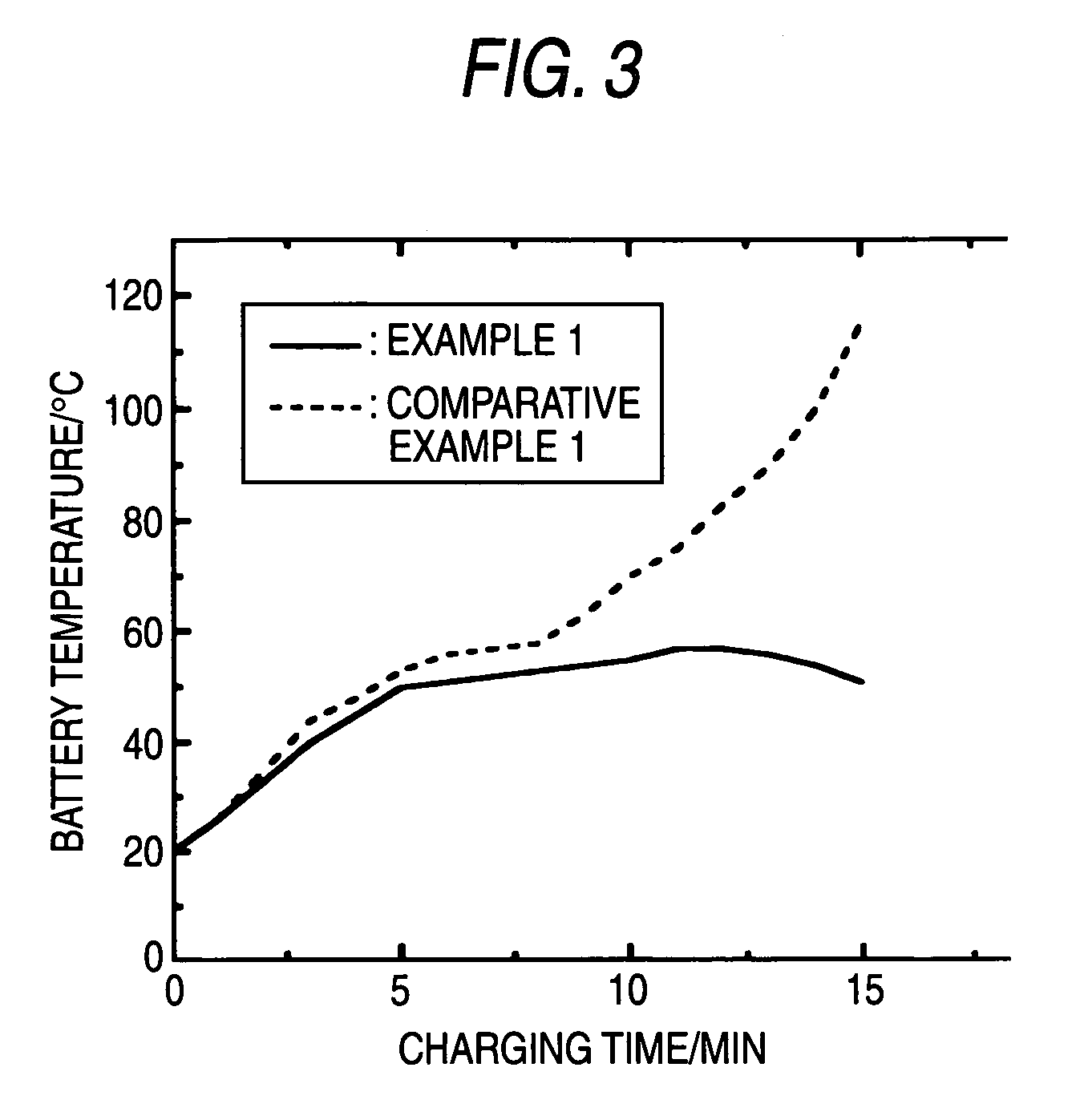Sealed alkaline storage battery, electrode structure and charging method for the same, and charger for sealed alkaline storage battery
a technology of alkaline storage batteries and electrode structures, which is applied in the direction of nickel accumulators, cell components, sustainable manufacturing/processing, etc., can solve the problems of increased internal pressure of batteries, reduced cycle life, and gas leakage, so as to increase the activity of batteries, inhibit internal pressure from increasing, and enhance the ability to absorb oxygen gas
- Summary
- Abstract
- Description
- Claims
- Application Information
AI Technical Summary
Benefits of technology
Problems solved by technology
Method used
Image
Examples
example 1
[0218] (Production of Positive-Electrode Active-Material Powder)
[0219] A positive-electrode active-material powder consisting mainly of nickel hydroxide was produced by a known method.
[0220] An aqueous solution containing nickel sulfate, zinc sulfate, and cobalt sulfate was gradually added to and mixed with a reaction bath which contained ammonium sulfate and sodium hydroxide and the pH and temperature of which were set at 11.8-12.2 and 43-47° C., respectively, while stirring the reaction bath.
[0221] During the addition, the pH and temperature of the reaction bath were regulated so as to be within those ranges. Thus, a nickel hydroxide powder containing zinc hydroxide and cobalt hydroxide in a solid solution state was yielded. The proportions of the zinc and cobalt contained in the powder were regulated to 3% by weight and 2% by weight, respectively, in terms of metal proportion.
[0222] Subsequently, the nickel hydroxide powder was immersed in an aqueous sodium hydroxide solution...
example 2 to example 5
[0260] The same constitution as in Example 1 was employed, except that springs differing in modulus of elasticity were used to change the specified operating pressure for the pressure switch to 0.7 MPa, 1 MPa, 3 MPa, and 3.3 MPa, respectively. The batteries were referred to the batteries of Example 2, Example 3, Example 4, and Example 5, respectively.
example 6 to example 9
[0289] The same constitution as in Comparative Example 1 (having no pressure switch function) was employed, except that a temperature switch function only was imparted (the structure shown in FIG. 1 in which the pressure switch was omitted and one end of the bimetal positive-electrode lead plate was contacted with the inner side of the metallic lid to thereby electrically connect the positive electrode to the positive-electrode terminal) and that the temperature characteristics of the bimetal used as the positive-electrode lead plate were changed to set the operating temperatures for the temperature switch functions (the temperatures at which the charging circuit was made off) in Example 6 to Example 9 at 50° C., 60° C., 80° C., and 100° C., respectively. These batteries are referred to as the batteries of Example 6, Example 7, Example 8, and Example 9, respectively.
[0290] (Battery Test 2)
[0291] A pressure sensor for measuring the gas pressure in a battery was attached to each of ...
PUM
 Login to View More
Login to View More Abstract
Description
Claims
Application Information
 Login to View More
Login to View More - R&D
- Intellectual Property
- Life Sciences
- Materials
- Tech Scout
- Unparalleled Data Quality
- Higher Quality Content
- 60% Fewer Hallucinations
Browse by: Latest US Patents, China's latest patents, Technical Efficacy Thesaurus, Application Domain, Technology Topic, Popular Technical Reports.
© 2025 PatSnap. All rights reserved.Legal|Privacy policy|Modern Slavery Act Transparency Statement|Sitemap|About US| Contact US: help@patsnap.com



